101 (104) start the new year in autumn
Since students in the middle ages were needed at home or on college lands to help with the harvest, the long
vacation was fixed in the summer. It was natural to start afresh afterwards.
105 Monsignor Bell [Only in Am. Ed.]
The Catholic chaplain at Oxford University, but not a real person.
101 Mgr [Only in Br. Ed.]
One of the two abbreviations for Monsignor. The other is Msgr.
101 (105) sent down
i.e. expelled from the university. He could be readmitted under certain strict conditions, to be negotiated.
101 (105) League of Nations Union
A student organisation formed to support the principles and actions of the newly formed League of Nations,
which had its headquarters at Geneva in Switzerland. The League of Nations suffered at that time from the
not inconsiderable disadvantage that the United States, the Soviet Union and Germany did not belong.
101 (105) Isis
See the note on page 23.
101 (105) Cadena café
One of a chain of cafés. This one in Cornmarket Street, apparently, is popular with students. Many older
people will remember the wonderful smell of coffee which drifted down the streets from the Cadena cafés. The
chain was taken over by Tesco in the late 1960’s and the cafés were closed. This one is now an HMV store.
Roger Fry was employed to design decor for the Cadena Cafés.
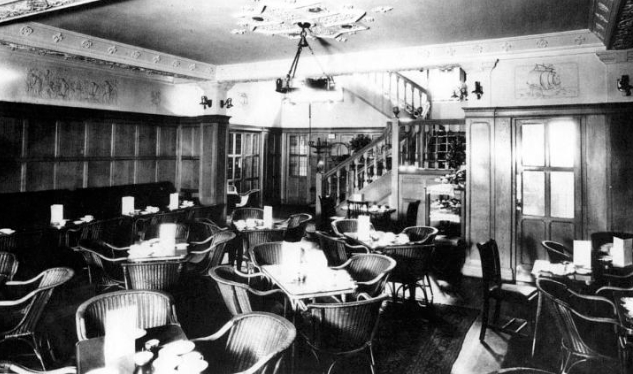
101 (105) Boar’s Hill
See the note on page 28.
101 (105) Keble
i.e. the college at Oxford created by supporters of the great High Church theologian John Keble (1792-1866).
It had perhaps an unwelcome reputation for excessive earnestness.
102 (105) Munich
Capital of Bavaria, the state that is furthest south in Germany. Munich was then the power-base of the Nazi
Party, and indeed in the following month (November 1923) Hitler and his colleagues attempted a right-wing
putsch. Blanche’s policeman might easily have been heavily involved in helping to maintain order.
102 (106) Greats
This term is used only at the University of Oxford. It is the name for the final examination for a B.A.
degree in classical studies (i.e. of Ancient Greece and Rome). It was the culmination of a four-year course
of study, the students having studied ancient Greek and Latin literature for two years and then the history
and philosophy of those ancient civilisations (Litterae Humaniores) for two more years.
102 (106) public mischief
EW always thought (and Charles too appears to think) that the less government there is, the better. Unlike
anarchists, who thought the same, he recognised the necessity of having a government, but believed that it
should interfere with people’s lives as little as possible. Jasper’s entry into public service could only
mean for Charles that he was embarked on a career of interference and insolence.
102 (106) beta minus
A grade for an essay paper. The three main grades are alpha, beta, and gamma,
with alpha as excellent and gamma as mediocre. The grade could be shifted up by adding
plus and down by adding minus. Beta minus is a satisfactory result. (The grades
are the first three letters of the Greek alphabet.)
102 (106) Collections
Collections were examinations at the beginning of a term set by one’s college tutor (rather than by the
subject faculty) and therefore not as important as one’s degree examination, but the student needed success
in order to stay in the college for the rest of that term.
102 (106) History School
i.e. the Faculty of History
103 (106) Ruskin School of Art
John Ruskin founded this school (full title : Ruskin School of Drawing and Fine Art) in Oxford in 1871.
Ruskin was then the first Slade Professor of Art at the University, and his influence was still strong in
the 1920’s.
103 (106) daughters of north Oxford
North Oxford was originally a suburb developed in the Victorian period on land owned by St John’s College,
which therefore became very rich. North Oxford quickly became associated with houses needed by dons, who
from 1877 were permitted to marry without forfeiting their fellowships. This area is still called North
Oxford though it is now fully part of the city rather than a suburb and Oxford spreads far to the north of
it.
103 (106) Ashmolean Museum
Oxford’s Museum of Art and Archaeology founded in 1683; it was England’s first museum.
103 (106) Trilby
A reference to the novel Trilby by George du Maurier (1834-1896) which was published in 1894. Trilby
is an artist’s model who falls under the spell of the hypnotist Svengali but who is nevertheless turned into
an accomplished singer.
104 (107) launched in Society
Charles (or EW) is here thinking of the young men and women of the same age and class who go out into the
world at the age of 17 or 18. The men go to the Universityor into the armed forces; the girls to the
activities of their debutante year.
104 (108) adolescent Englishmen
Men grew up less quickly in 1923 than they do now (physically at least), but even so it seems strange to us
to call twenty-year-old men adolescent. But Ryder and Sebastian had been brought up mainly in the
all-male environment of the public school; they had a considerable portion of their education and their
sexual development still to complete. In that sense they were adolescent. EW made no secret of calling his
period at Oxford his adolescence. In his autobiography Old Men
Forget, published in 1953, Duff Cooper (husband of Lady Diana) gives the chapter dealing
with his life from the age of 17 to the age of 23 the title Adolescent.
105 (108) Hogarthian
William Hogarth drew wonderful scenes from London life (especially low life) which fixed the appearance of
eighteenth century London firmly in the minds of later generations. Narrow streets, dark nooks and crannies,
and teeming masses all seemed inseparable from a riproarious if dangerous life-style.
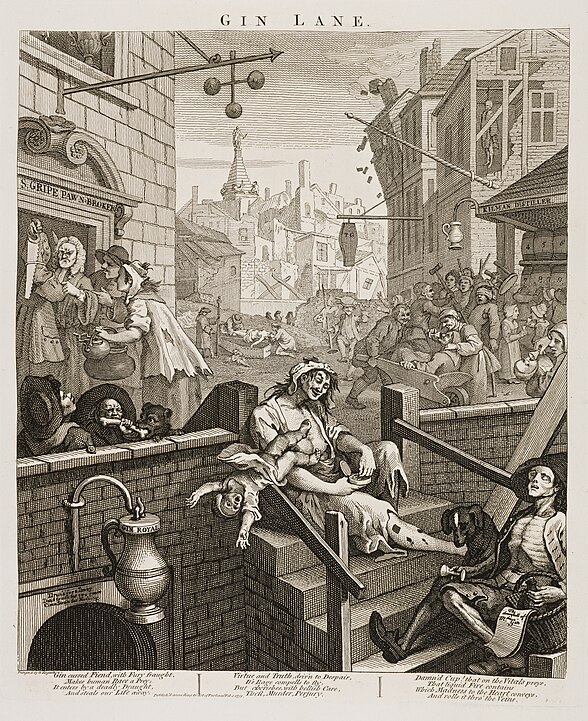
105 (108) St Ebb’s and St Clement’s
Districts of Oxford not commonly the haunts of students. (St Ebb’s is usually spelt St Ebbe’s now.)
A list of the public houses that Charles and Sebastian visited follows. An important point to know is that
undergraduates were then forbidden to go into pubs at all. Many did, of course. St Ebbe's Street was one of
the shortest streets in Oxford, but it had at least five pubs for many years.
105 (108) Gardener’s Arms ... Nag’s Head ... Druid’s Head ... Turf in Hell’s Passage
These were real pubs in Oxford in the 1920’s (and now, some of them), but not fashionable ones. EW mentions
three of them in ALL. Hell’s Passage was named in the 18th century after a gambling hell or
gambling house. The Turf Tavern dates back to the fourteenth century and is still popular though very small.
105 (109) BNC
i.e. Brasenose College, then (and later) renowned for its sporting rather than its academic prowess. The
name (‘brazen nose’) comes from the nose of the original sanctuary knocker, which was in the shape of an
animal’s head and possibly hung on the door of the original Brasenose Hall when it was sited at Stamford in
Lincolnshire in the 13th century. (See an account at the Brasenose College website.)
105 (109) Michaelmas term
The name for the autumn term at Oxford. The Feast of Saint Michael & All Angels (as many call it now) is on
29th September.
105 (109) Mons and Passchendaele
Two battles of World War I. Mons was the scene of the first British encounter with the German army in August
1914; the British retreated in face of superior numbers. Passchendaele (July-November, 1917), also known as
the third battle of Ypres, consisted of a massive British and Canadian offensive. They pushed the German
lines back only five miles in four months; each side suffered over 250,000 casualties.
106 (109) a young history don
This character is certainly based on Maurice Bowra (1898-1971, knighted in 1951), already a don and
beginning to create a wide circle of disciples when EW went up to Oxford in 1922. Bowra himself ruefully
admitted that in Mr Samgrass’s speech EW had caught his exact manner of speaking. Bowra’s distinguished
academic career included being Warden of Wadham College, Oxford (1938-70), Professor of Poetry (1946-51),
Vice-Chancellor of Oxford University (1951-54), and President of the British Academy (1958-62).
106 (109) muniment-rooms
Archives which contain legal documents, generally to do with property rights.
106 (110) genealogist
A person who studies the history of families and therefore the intricacies of ancestry.
106 (110) legitimist
A person who believes in the principle of rule by inheritance, i.e. monarchy and aristocracy.
106 (110) benediction
A Catholic service (separate from the Mass) in which the Blessed Sacrament is adored. It used to be a very
popular service.
106 (110) mantillas
Lace scarves covering the head and shoulders.
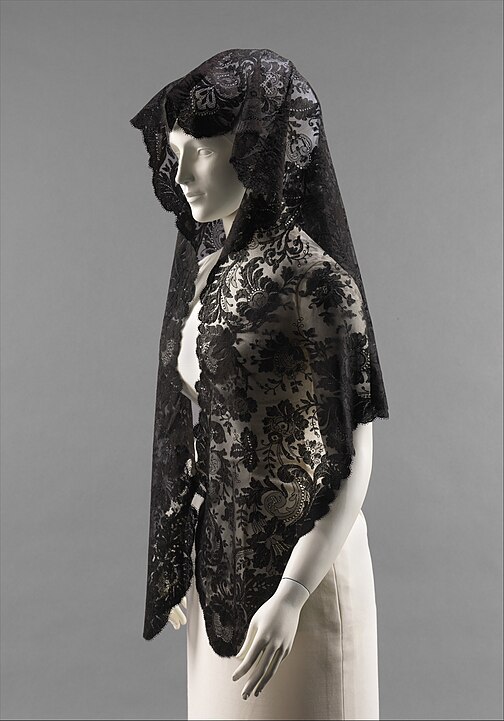
110 a concealed typewriter [Only in Am. Ed.]
In the revised edition of BR this became a dictaphone, which seems more plausible.
106 () a dictaphone [Only in Br. Ed.]
A small hand-held tape recorder, i.e. the latest technology. Dictaphones, of what we would now consider to
be immense size and clumsiness, were first made with the intention of providing businesses with the ability
to record and reproduce sound in office settings as early as 1888. The name dictaphone was first
trademarked in 1907.
107 (111) ulster
A long, heavy, loose overcoat. It was made by the Ulster Overcoat Company of Belfast and was made famous in
literature by being worn by Sherlock Holmes.
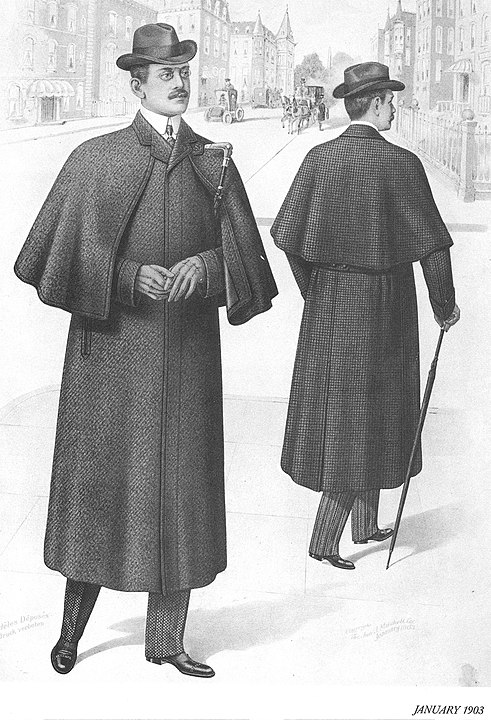
107 (111) Chasms
A family that also appears in four other EW novels. Since most of his novels dealt in some way with high
society he made a habit of recycling characters : even main characters sometimes turned up in other novels
as minor ones. The ill-starred Agatha Runcible, a leading light among the Bright Young People who dies after
a car crash in Vile Bodies, was the daughter of Lord and Lady Chasm.
107 (111) the Prince of Wales
In 1923 the then Prince of Wales, later King Edward VIII, was 29 years old and already the centre of society
in a way his father George V never attempted to be.
107 (111) ‘Max’
William Maxwell Aitken, Lord Beaverbrook (1879-1964). Beaverbrook was the owner of the Express Group of
London newspapers and a prominent and influential man in politics and society. All his friends and
colleagues called him Max.
107 (111) ‘F.E.’
F. E. Smith (1872-1930), just created earl of Birkenhead, lawyer, statesman and wit. He had as Lord
Chancellor just finished taking part in the negotiations for Irish self-government which resulted in the
creation of the two entities, the Irish Free State and Northern Ireland. His son Freddie, later the second
Lord Birkenhead, was a friend of EW’s.
107 (111) ‘Gertie’ Lawrence
Gertrude Lawrence (1898-1952), famous actor, singer and comedy star. Almost all her greatest successes lay
ahead of her in 1923, including her conquest of America, but she was already well-known in London high
society.
107 (111) Augustus John
Fluent society portraitist of great prestige (1878-1961); he painted Angela Lyne’s portrait in EW’s novel Put Out More Flags. He is now considered inferior as an artist to his
sister Gwen. To his credit, John himself thought this before anyone else did.
107 (111) Carpentier
Georges Carpentier (1894-1975), French boxer of great personal charm who had just been World
Light-Heavyweight Champion and had fought a famous (but unwise) bout with Jack Dempsey for the Heavyweight
title in 1921. He was later to compound the folly by fighting Gene Tunney.
108 (111) M.C.
Military Cross, a distinguished award for officers in the Army.
108 (111) A.D.C.
aide-de-camp, i.e. assistant to a senior officer.
108 (112) the City
i.e. the City of London, Britain’s financial centre.
109 (112) charity ball ... a dinner party for it
For all well-attended private and charity balls it was customary for there to be several preliminary dinners
in other houses beforehand. A charity ball might not provide much in the way of food, in any case.
109 (113) Jeroboam
A large bottle of champagne holding four times the amount of a standard bottle, i.e. three litres. There are
several larger sizes going up to the 27-litre Goliath.
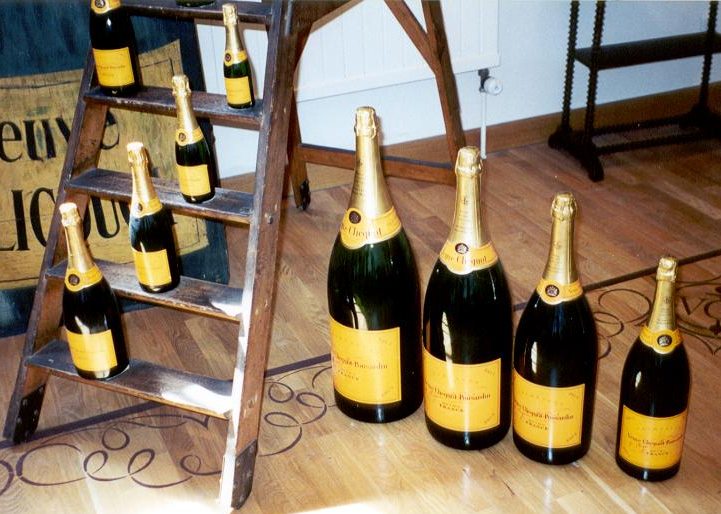
109 (113) Old Hundredth
A nightclub, with some of the characteristics of a brothel. EW based it on ‘The 43’ in Gerrard Street, owned
by Mrs Meyrick (who here becomes Ma Mayfield). The Old Hundredth also appears in EW’s novel A Handful of Dust.
Mrs Meyrick, also known as Ma, was an interesting individual. She was not Cockney, but an Irish woman. She married an English doctor who separated from her in 1919 leaving her to look after their eight children. She did this by opening dance and night clubs as fast as they were closed down by the magistrates. She became the undoubted night club queen of London, sent her sons to Harrow and married four daughters into the nobility. Before she died in 1933 she published an interesting account of her career entitled Secrets of the 43 Club though it must be admitted that she betrays ingenuousness in her assertions of innocence and victimisation.
110 (114) Sink Street
There is no such road in London.
110 (114) Leicester Square
A real location. Gerrard Street (and therefore Sink Street) is actually just off Leicester Square.
114 given a dose [Only in Am. Ed.]
i.e. of venereal disease
110-111 (114-115) dearie ... duckie
Characteristic terms of address in London. Neither necessarily indicated acquaintanceship or affection.
110-111 (114) ten bob ... a quid
(slang) i.e. 50p and a pound in modern terms. Very large amounts then.
111 (115) fairies
A name commonly given to male homosexuals in Britain at this time.
111 (115) six bob
i.e. 30p. This is expensive for the period. Everything is charged high here.
113 (117) Two policemen quickened their stride and approached us.
This incident is based on one EW had in real life. On 6th April 1925 he was out on a pub-crawl (prior to a
party!) with Matthew Ponsonby, son of a recent government minister and grandson of Queen Victoria’s private
secretary, when the car Ponsonby was driving was stopped by the police in Oxford Street attemptng to go the
wrong way round a traffic island. The two of them and Olivia Plunket Greene were arrested and put in the
police cells for several hours. Ponsonby’s father bailed his son out but did nothing for EW, who had to
sober up before being released; he was charged with being drunk and incapable. The following morning he was
fined two pounds at Bow Street but Ponsonby, the driver, was brought to trial. EW feared his friend would be
jailed but he too escaped with a fine, of £21 9s, and disqualification from driving for a year. EW offered
to pay half of Ponsonby’s fine but the incident cooled their friendship terminally.
EW was peeved by certain aspects of the case, in particular the descriptions in the newspapers that stated he was far the more incapable of the two, using as evidence the fact that he claimed that the case of drink in the car was his. It was, but it was also drink that he was taking to the party. Nevertheless, he possibly was the more incapable of the two, for at that time and for much of his life he drank very heavily.
113 (117) I reckon she pays you a nice retainer
These words are remarkably unwise but, unfortunately, were likely to be true. In 1928 a Sergeant Goddard of
the local vice squad was convicted of accepting large sums of money from night-club owners for protecting
them from and warning them of police raids. One of these owners was Mrs Meyrick, who was subsequently jailed
for fifteen months. One of the thought-provoking aspects of the case was that Goddard had been commended no
less than 91 times for his devotion to duty; and another that an honest sergeant who had accused him of
corruption seven years before had been forced to resign from the force. This ex-sergeant was at least given
compensation.
114 (118) Home Secretary
The minister in government whose responsibility is good public order. Mulcaster, who is a compound of
self-importance and unawareness, is foolishly trying to wield influence that is certainly unjustified. The
Home Secretary at this time (probably November 1923 - see my Chronology) was William Bridgeman, a now almost unknown politician whose chief claim
to fame is that he turned down the pleas for clemency that flooded into the Home Office on behalf of Edith
Thompson, sentenced to hang for inciting her lover to murder her husband.
115 (119) Havana cigars
Then plentiful despite their excellent quality.
115 (119) astrakhan
Then an expensive fur fabric made from the curly black fleece of lambs from Astrakhan, which borders the
Caspian Sea in southern Russia. There is still a fabric called astrakhan; it is made from acrylic fibres.
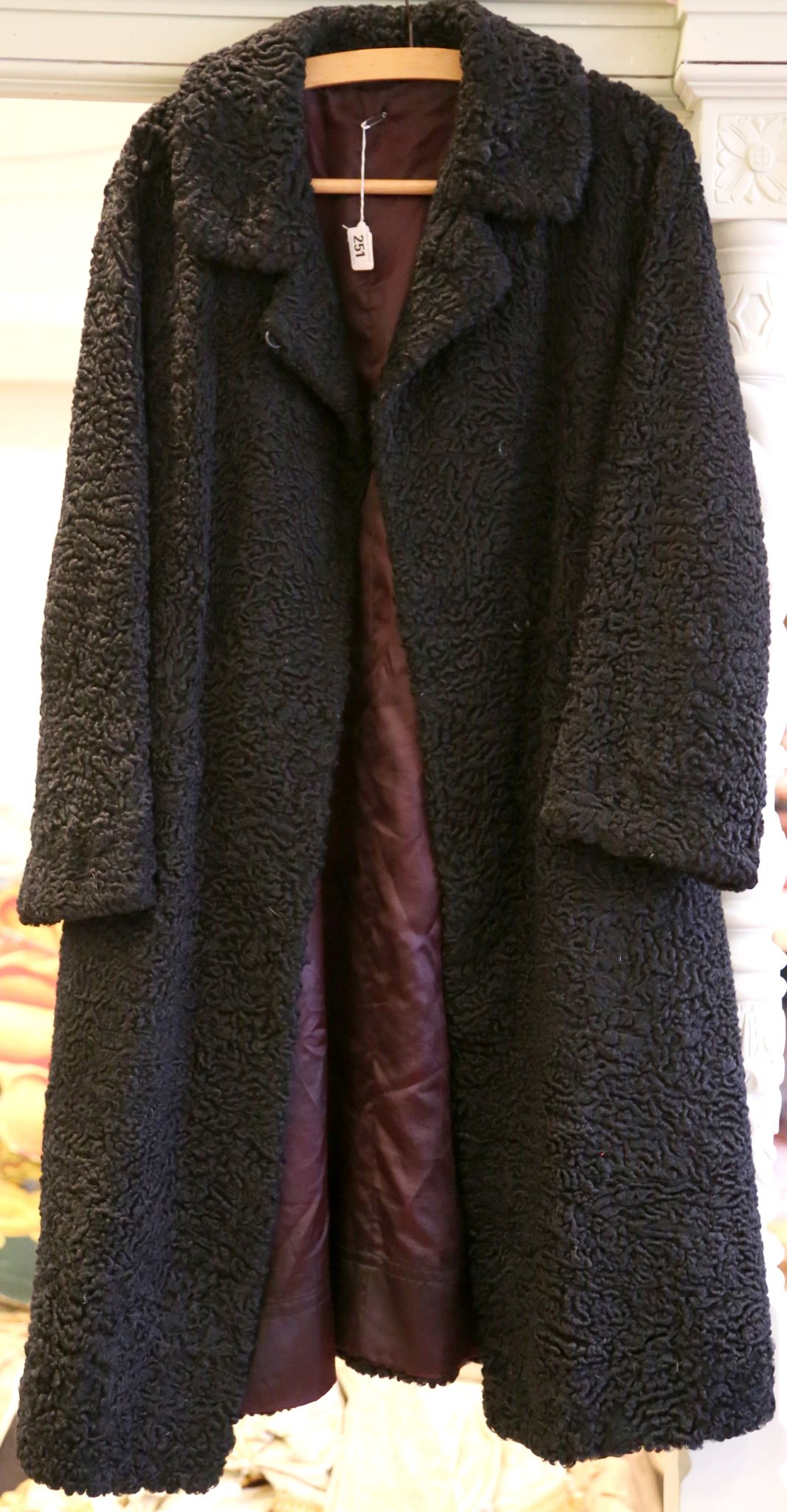
115 (119) crapulous
A splendid-sounding word for Mulcaster. It means ‘sick from drunkenness’, however.
115 (119) magistrate’s court
The court of initial justice. Sometimes in trivial cases the legal process finished here with a fine or a
short sentence. If the case were more complex and needed lawyers to be briefed, it might be adjourned to a
fixed date, which is what happens in Sebastian’s case. He is differently treated because he is the drunken
driver; the others are mere passengers. If the magistrate were to find the case too important for him to
deal with, he would transfer it to the judges’ courts or assizes (now called county courts). The defendant
could also ask for this to be done.
115 (119) Heppell’s
A chemist’s shop in Mayfair. The draught is no doubt a pick-me-up or hangover cure.
115 (119) Trumper’s
The famous London barber’s in Curzon Street, owned and managed by George F.Trumper (died 1944).
116 (120) The Star
The Star was one of the evening papers of the period in London; it later merged with the London
Evening News.
117 (121) Bow Street
Site of a famous court and a famous police station. The Bow Street Runners, an early police force, operated
from here in the 18th and early 19th centuries. It is the only police station in Britain to have a white
lamp outside instead of a blue one; when she came to the area, Queen Victoria objected to the blue lamp as
it reminded her of the blue room in which Prince Albert had died.
117 (121) Gunter’s in Berkeley Square
A restaurant in a very fashionable part of London. An Italian pastry-cook, Domenico Negri, founded it in
1757 as a tea-shop at numbers 7 and 8. He advertised it as making and selling all sorts of English,
French, and Italian wet and dry sweetmeats and the place became popular as a rendezvous for ladies
and gentlemen to meet members of the opposite sex without arousing comment. The sorbets and the ices were
the original attractions of the tea-shop. Negri took James Gunter into partnership in 1777, and by 1799
Gunter was running the business as sole proprietor. Eventually the practice grew for the clientele to be
served in the Square itself, the waiters running across the road to take and carry orders. The restaurant
lasted until the 1930’s.
117 (121) diamond arrow
EW initially wrote diamond clip here, but when he sent out 50 pre-production copies of the novel to
friends for comment, Nancy Mitford wrote to him (22nd December 1944) : One dreadful error. Diamond clips
were invented only about 1930, you wore a diamond arrow in your cloche. EW corrected the
mistake in time for both the British and American first editions.
118 (122) the clink
Slang for gaol, derived from the name of a prison in Southwark. It was burned down in the Gordon Riots of
1780 after more than six hundred years of existence and was never rebuilt.
119 (123) exemplary sentence
A punishment of some severity intended to be an example to others.
119 (123) the Vice-Chancellor
The Vice-Chancellor possessed the real power in the University. At that time he held the position for four
years. (Under recent reforms the period has been increased to five with the option of two further years.)
The Vice-Chancellor is responsible for the administration of the University.
The Chancellor, technically the number one position in the University, was (and is) a figurehead, so that the position is usually held for life by a prominent person in public life only remotely linked to education. All the Masters of Arts of the University are entitled to elect the Chancellor (and, incidentally, the Professor of Poetry). The fact that Lady Marchmain actually speaks to the Chancellor (who would no doubt know her in private life) indicates the lengths to which she would go to prevent Sebastian from being sent down. The Chancellor would not normally intervene in such matters. At this time the Chancellor was Lord Curzon, a famous political figure who in 1923 had been expected to become Prime Minister but was excluded because of doubts that, in the twentieth century, a lord should hold the post.
119 (123) Dean of Christ Church
The Dean is the leading figure in Christ Church College as well as an official in the Cathedral.
119 (123) ‘gated’
Confined to the grounds of their individual colleges at stated times.
120 (124) venery
i.e. hunting
120 (124) caryatids
Columns carved in the form of female figures.

120 (124) Marchmain Hounds
A foxhunting organisation.
120 (124) tapestries
Large heavy fabrics with woven patterns. The Tapestry Room would have a number of tapestries covering the
walls. Their main purposes were to decorate the room and to add a certain amount of protection from cold and
draughts.
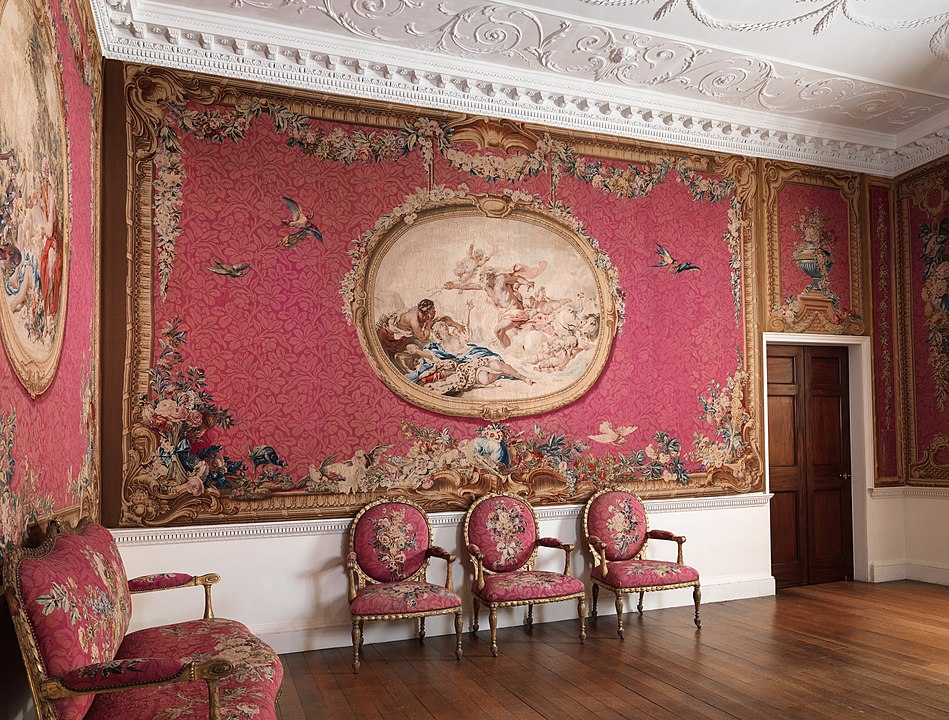
120 (124) Dominican
Saint Dominic de Guzman (1170c-1221) founded the Dominicans in 1215 to be a preaching and proselytising
order of friars. Though they wear white habits, in England they became known as the Black Friars because
they wore a black hood (and cloak) when hearing confessions.
120 (124) Maritain
Jacques Maritain (1882-1973), a prominent Catholic philosopher. His main interest was in the different
degrees of knowledge and their interrelationships; he was also interested in political philosophy. His
writings stress that reality can be known in many different ways - for instance, through science,
philosophy, art, or mysticism; each of them contributes something distinctive to human knowledge. He made a
conscious effort to accommodate the thought of Saint Thomas Aquinas (1225-1274), central in Catholic
philosophy, with modern thought and life.
120 (124) Hegel
One of the central concepts of the philosophy of Georg Wilhelm Friedrich Hegel (1770-1831) is the definition
of the highest form of consciousness as self-consciousness evolved to the level of ‘absolute knowledge’.
This is when human consciousness through the workings of reason identifies itself with the ‘Absolute’, with
reality. (Hegel also developed the dialectic theory of history later so influential in Marxist thought.) His
writings, usually considered unreadable, need interpreters.
Mr Samgrass appears to be saying that the Dominican friar takes too much account of the Catholic view of reality and too little of Hegel’s essentially non-religious view of it.
120 (124) Magyar
i.e. Hungarian
120 (124) the incomparable Charlus
Baron Palamède de Charlus is a character in Marcel Proust’s great novel sequence À la recherche du temps
perdu. He pretends to be a ladykiller but is homosexual. He is betrayed by his friends, but
Mr Samgrass could not yet have read about the Baron’s sad decline : the novel that contains it had not yet
been published though in 1923 Proust had been dead for more than a year.
120 (124) beau-monde
‘The beautiful world’ (French), i.e. the richest and most fashionable people in society.
120 (125) Celia
This is the Celia whom Charles will later marry. A girl who amuses and perhaps attracts Samgrass is not the
one for Charles.
121 (125) hacked home
Sebastian had ridden back at a moderate pace, putting the horse under no pressure.
121 (126) many little talks
It is sometimes a little difficult to understand what Sebastian has against his mother. These little talks
help to explain. All Sebastian’s friends are changed by her concerns for their religious and general
welfare. They become her intimates, they behave differently when she is around. Sebastian’s cultivation of
irresponsibility and happiness is blocked, and a future of serious application threatens too immediately on
the horizon.
122 (126) cornice
A horizontal moulding along the top of the wall. Charles notices that Lady Marchmain prefers a bourgeois
intimacy and comfort to splendid architecture and stylish living (though she is not middle class in origin).
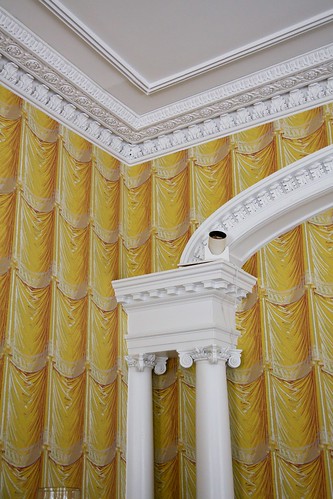
122 (126) potpourri
Spices, dried blooms and leaves placed in a pot to give a pleasant odour to a room.
122 (126) Madonna ... St Joseph
Typical statuettes to be found in a Catholic home. The Madonna is of course the Virgin Mary.
122 (126) posthumous miniatures
Miniature portraits painted from photographs of her brothers after their death.
122 (127) a camel and the eye of a needle
Charles is mischievously implying that Lady Marchmain’s riches leave her in the position of the rich man in
Christ’s warning, given in the Gospel of Saint Matthew 19, 24 :
123 (127) the Alice-in-Wonderland side
Alice in Wonderland
by Lewis Carroll (Charles Dodgson, 1832-1898) was one of EW’s favourite books.
123 (127) Polynesian
An inhabitant of one of the groups of Pacific islands which were invariably associated in European minds
with a form of carefree and easy existence, not to say idleness and self-indulgence. The image reinforces
the impression we get of Sebastian’s flight from adulthood and responsibility.
124 (128) Green arse, Samgrass
In educated southern English this ditty rhymes.
125 (129) something chemical in him ... determinism
Determinism is the doctrine or belief that ‘everything, including every human act, is caused by something
and that there is no real free will’ (Encarta Dictionary). Charles (as the wiser but sadder narrator)
associates Julia’s glib words with the determinist idea that everything in life is laid out for us and that
nothing can be prevented, including Sebastian’s alcoholism. In his maturity Charles rejects the idea and all
its implications.
125 (129) Tuesday of Easter Week
i.e. the Tuesday after Easter. The Tuesday before Easter would be in Holy Week. Maundy Thursday is the
Thursday before Easter.
125 (129) retreat
A period devoted to prayer and meditation, away from the world’s usual activities, here in a monastery.
Sebastian’s sense of self-loathing, entrapment and helplessness has been increased and not diminished by the
experience : perhaps the retreat-master concentrated too much on the unworthiness of humanity and not enough
on the tidal wave of the love of God. Sebastian needed a clear-sighted confessor-advisor all to himself.
126 (130) mah-jongg
Ancient Chinese game new to many in the West at this time, often spelt mahjong. Expensive ivory
sets of the game arrived in London stores in time for Christmas 1923.
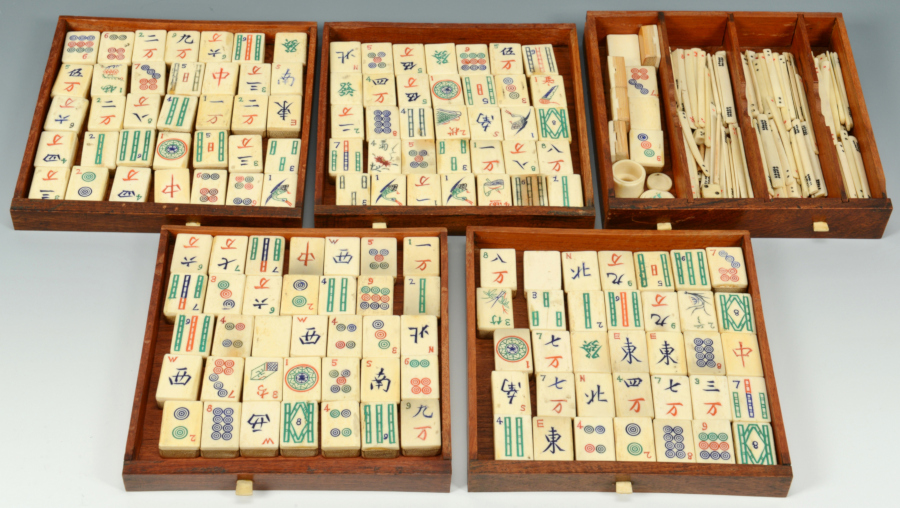
127 (131) How very boring
Julia uses a catch-phrase of the time. Boring could mean many things (tiresome, trivial,
small-minded), including annoying as here. She comes across in this episode as
self-centred and uncaring : later we find out that she has problems and preoccupations of her own in
relation to Rex.
128 (133) The Wisdom of Father Brown
One of the volumes of stories by G.K.Chesterton (1874-1936) featuring his priest-detective Father Brown. We
find out much later which story it is. It is actually from the collection entitled The Innocence of Father
Brown.
130 (135) Sweet bulldog.
Sebastian thinks that Charles is now acting like one of the marshalls who patrol Oxford - he therefore
associates his mother with the proctors as symbols of restrictive and repressive authority.
132 (137) ‘grandmother’s steps’
A reference to a child’s game where you try to creep up on a person while his back is turned. You must not
be discovered moving when he turns round to try to catch you doing so.
133 (137) Now it’s my son’s turn to do what Ned can never do now.
Lady Marchmain makes it clear in the next sentence that she is thinking of Sebastian and not of Bridey. This
is at the heart of the problem. She intends Sebastian to assume the responsibilities of the head of
her family now that all her brothers are dead. (Such arrangements were not uncommon after the
carnage of World War I.) The brothers were, it seems clear from what little we know of them, a very
different type of man from Sebastian : Charles realises this when he reads the book.
133 (138) bondieuserie
A contemptuous word for the religious artefacts and atmosphere in Lady Marchmain’s room (from the French
le bon Dieu, ‘the good God’).
133 (138) chintz
Brightly coloured cotton furnishings.
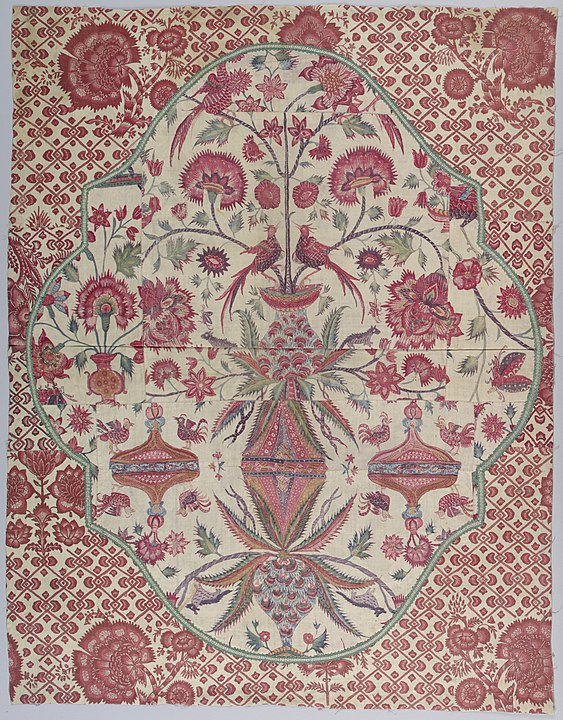
133 (138) petit-point
Embroidery employing small stitches.
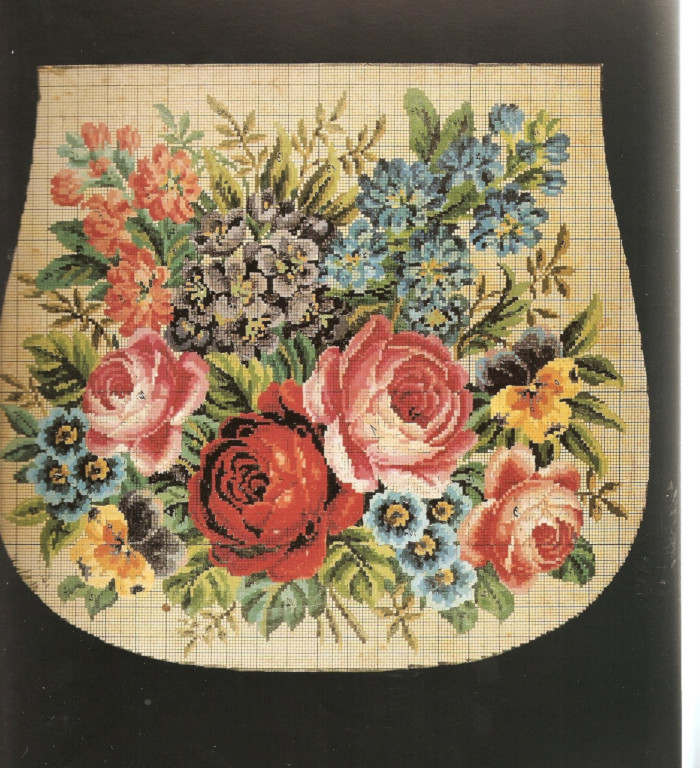
133 (138) entablature
The part of the building between the top of the columns and the roof or ceiling.
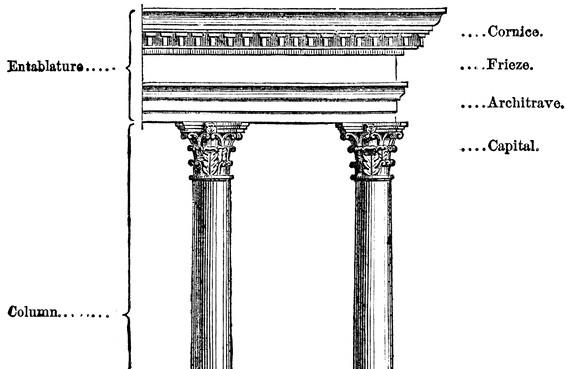
133 (138) Grenadier uniform
The Grenadier Guards were the first and oldest of the Guards Division, the troops of the Royal Household.
The bearskin caps and red coats of all five guards regiments are familiar sights in tourist London today.

134 (139) pince-nez
Spectacles without side arms, held onto the top of the nose by a clip. Why EW should consider travelling
salesmen as especially prone to wear them is unclear.
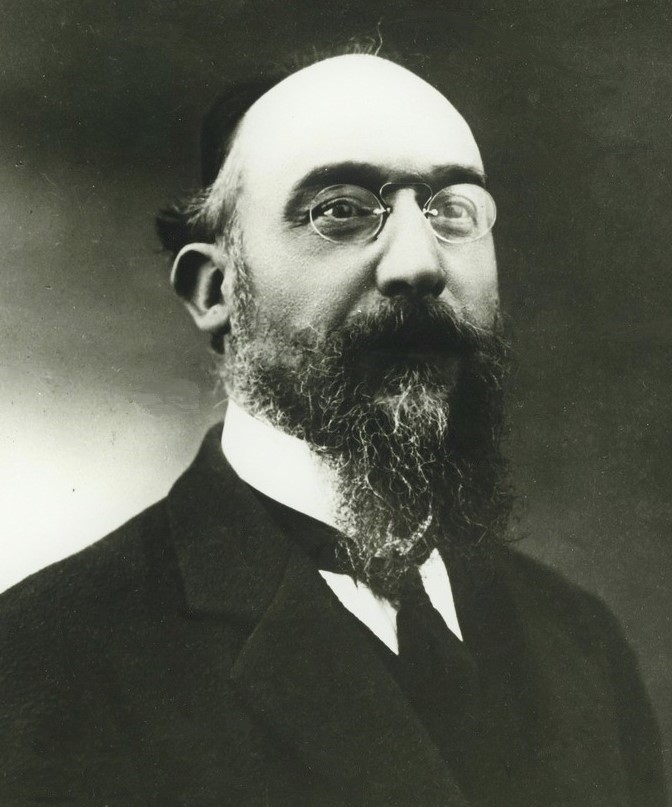
135 (140) ‘Sebastian contra mundum’
‘With Sebastian, against the world’ (Latin); an expression of profound loyalty.
135 (140) We returned to Oxford
It is now May 1924, the beginning of the Trinity term.
135 (140) Blackwell’s
The famous bookshop in Oxford. Its modest shop-front conceals a maze of underground shelving containing
hundreds of thousands of books (possibly a quarter of a million).
135 (140) digs
i.e. lodgings (student slang).
137 (142) Holywell ... the Parks ... Mesopotamia ... North Oxford
A walk from the centre of Oxford to a suburb, lasting perhaps an hour. Holywell is pronounced ‘Holly-well’;
Holywell Street contains the oldest concert hall in Europe, opened in 1748. The Parks are an open green area
belonging to the university. Lady Marchmain and Charles probably wandered a little while they conversed.
Mesopotamia was originally the country between the rivers Tigris and Euphrates; its name (from Greek) means in the middle of the rivers. In Oxford it is the name of a walk along the Cherwell; its name comes from its path being on a spit of land, really an island, lying between two branches of the river which diverge and then unite again. The ferry mentioned by EW was discontinued in 1925 when a bridge was built to replace it.
138 (143) the Newman
The Newman Society was and is the leading association for Catholics at Oxford. It is named after the
Cardinal and meets in the Catholic Chaplaincy, the Old Palace.
141 (147) I intend to be a painter.
Mr Ryder accepts this proposal with little opposition, considering the circumstances. EW’s own father was
more circumspect when his son proposed to do something similar. He told him to get a degree first. When,
however, EW got a third, his father thought it unprofitable for him to spend the required ninth term up at
Oxford enjoying himself and doing no work at all, and entered him for an art school.
142 (148) the Levant
A favourite term for what we now call the Middle East.
143 (148) orthodox monasteries
i.e. monasteries with monks of the Orthodox faith. They then had the reputation of being very difficult for
westerners to visit, though EW’s Oxford friend Robert Byron did so easily enough.